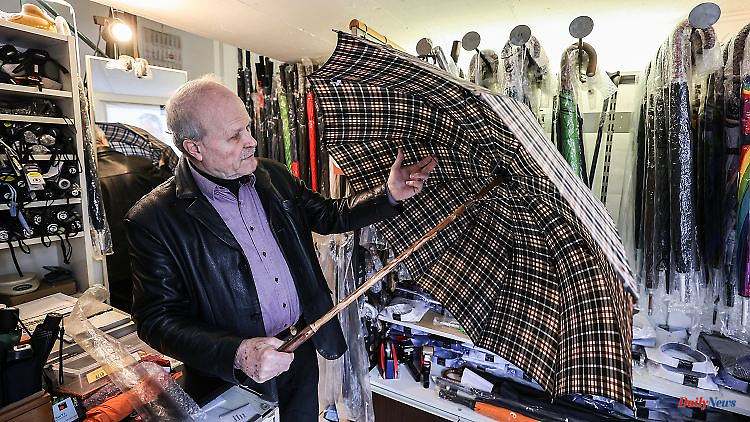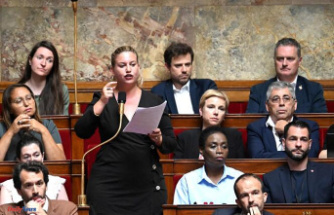Umbrellas are now mostly bought in drugstores or furniture discounters. Willy Schüffler from Essen cannot understand that, because the 74-year-old is an umbrella maker. From his point of view, a cheap umbrella is not only the worse, but also the more expensive product.
Umbrellas don't have to be disposable items that end up bent in bins after every stronger wind. You can also build them by hand with chestnut wood, carbon rods, stable rivets and a double-woven headliner and then use them for many years, says Willy Schueffler from Essen. The 74-year-old is one of the last master umbrella makers in Germany who manufactures such quality umbrellas in his own production and in larger quantities of 2000 to 3000 per year.
On special request, Schüffler will sometimes install an expensive silver-plated umbrella handle with the owner's signature or sew a chip into the umbrella's closing strap. So that you can locate him if you have left him there.
Musician Smudo even ordered an umbrella from him with a glittering "Swarovski handle" decorated with jewelry, says the 74-year-old. Schueffler's most expensive regular model costs 800 euros, for 50 euros he offers a "very decent" umbrella, which he repairs free of charge for ten years.
Umbrella maker is a dying profession: It was removed from the list of apprenticeships at the end of the 1990s, says a spokeswoman for the Düsseldorf Chamber of Crafts, which is responsible for Schueffler. Schüffler's small four-person operation is the last in the chamber district.
In the 1970s and 1980s, umbrella production in Germany was still the world leader, says the 74-year-old, who learned his trade from his father. The Brauer umbrella factory in Aachen alone employed over 1,000 people in the best of times. Then the business was increasingly taken over by cheaper Chinese manufacturers, who today almost completely dominate the world market.
In his workshop in the basement, the 74-year-old clamps a wooden umbrella stick into his machine, built in 1933. He cuts a recess for the Solingen steel spring, which will later hold the frame of the umbrella poles. Then he grinds the tip off. It smells like wood. Now the fabric for the sky can be sewn on.
Schueffler does not want to be intimidated by the overwhelming competitive pressure from the Far East. According to the Federal Statistical Office, almost 40,000 tons of umbrellas were imported to Germany in 2021 - the foreign trade statistics are based on weight. With a generously calculated weight of one kilogram per umbrella, this corresponds to at least 40 million imported umbrellas per year.
"People think they're saving if they take a 5-euro umbrella to the drugstore," says Schueffler. "But the umbrellas don't even last a season, a bad deal for buyers and an unimaginable mountain of rubbish." Nevertheless, there are only a few masters of his craft nationwide. Most of them repaired almost exclusively. Only very few companies produced occasionally and in hardly any quantities worth mentioning.
Schueffler, as one of the last of his guild, is - together with a professor from Aachen - even in demand as an umbrella expert when the Higher Regional Court in Düsseldorf, which is responsible for patent disputes, has to decide on trademark and know-how theft. Here, too, it is often about Chinese suppliers, he reports.
The umbrella fan keeps a particularly close eye on the English market. Finally, in London in 1830, what is probably the oldest umbrella shop in Europe was James Smith
One thing has always annoyed Schueffler when looking at the island: "The Queen often wore such cheap plastic umbrellas." Fortunately, that has now changed with King Charles: "He uses exclusive and valuable umbrellas."












